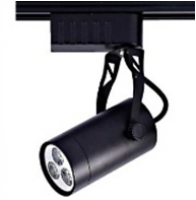Top News
Mr. Nguyen Quan Chinh, Vice Chairman, People's Committee of Quang Tri Province came to visit the site of LED installation.
Solar Panel Turns Raindrops Into Power
An innovative solar panel technology could turn raindrops into electric power, according to scientists in China.
The new solar cell design, which can be “triggered” by both rain and sun, is described in a paper published in the Angewandte Chemie journal.

“All-weather solar cells are promising in solving the energy crisis,” explain the scientists from Ocean University of China and Yunnan Normal University, noting that the technology combines an electron-enriched graphene electrode with a dye-sensitized solar cell. “The new solar cell can be excited by incident light on sunny days and raindrops on rainy days,” they add.
Dye-sensitized solar cells are thin-film photovoltaic cells that harness organic dye to absorb sunlight and produce electrons, thereby creating energy.
The Science News Journal notes that, by using a thin layer of highly conductive graphene, the solar cell could effectively harness power from rain. “The salt contained in rain separates into ions (ammonium, calcium and sodium), making graphene and natural water a great combination for creating energy,” it reports. “The water actually clings to the graphene, forming a dual layer (AKA pseudocapacitor) with the graphene electrons. The energy difference between these layers is so strong that it generates electricity.”
Contrary to what may be thought, raindrops are hardly pure water – they are made up of salts that separate into positive and negative ions. The positive ones such as calcium, sodium, as well as ammonium ions bind to the graphene surface, at which point the water becomes suffused with positive ions and the graphene is enriched in electrons.
The water then clings to the graphene and form a dual layer, a function identified as a pseudocapacitor. The difference in electric charge between the layers produces electricity.
The material converted solar to light energy at 6.5 percent – a far cry from current industry capabilities, where top solar panels today can efficiently convert up to 22.5 percent of the sunlight hitting them.
It could still be helpful, however, as solar panels typically produce up to 25 percent less electricity when the sun is in hiding. The solar panel could have greater potential in areas seeing greater rain accumulation.
China is one of the world’s major solar panel manufacturing bases and expects to significantly increase its own use of the technology over the coming years. In an attempt to reduce its carbon emissions, the country wants to triple its solar power capacity to as much as 143 gigawatts by 2020, according to a recent Bloomberg report.
U.S. firms are also looking to drive solar energy innovation. Last year SolarCity, which was co-founded by Tesla CEO Elon Musk, announced that it will make its most-cutting-edge solar panels in the United States. The San Mateo, Calif.-based firm will build its most-efficient rooftop solar panels at a huge new facility in Buffalo, N.Y. The factory is expected to reach full capacity in 2017.
Source: Discovery
Newer articles
- Hanergy Unveils Solar-Powered Cars to Expand Use of Technology (23/08/2016)
- Wisconsin's largest solar project delivering power to Alliant Energy customers (23/08/2016)
- Mitsubishi to invest in US solar co Nexamp (23/08/2016)
- Int'l exhibition on renewable energy and energy saving (23/08/2016)
- Raising the Awareness on Energy-efficient Practice and Operation of Boilers (21/08/2016)
Older articles
- Mitsubishi to invest in US solar co Nexamp (14/08/2016)
- Global solar installed capacity to reach 76,600 MW by 2020 (08/08/2016)
- DE Shaw buys 11-MW California solar project from First Solar (08/08/2016)
- Japan Asia Investment start works on 2-MW PV plant in Shizuoka (08/08/2016)
- Northern Power Corporation Promotes Communication for Power Savings in Hot-weather Season (01/08/2016)
Devices
Energy Audit
ONLINE
(0909.901.045)
| MOU SIGNING CEREMONY ABOUT SPECIAL LED WITH COB TECHNOLOGY FOR FISHING SHIPS BETWEEN QUANG TRI PPC AND NEDO |







































